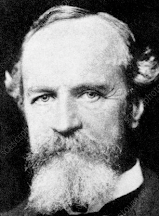Greg Taylor writes: Given the careful, in-depth research on mediums by highly qualified scientists over almost 150 years, we can now say there is an abundance of evidence in favor of the conclusion that mediums truly do communicate with the consciousness of deceased individuals. However, there is one other possible explanation: the ‘super-psi’ theory (also known as ‘living-agent psi’). This refers to the possibility that the information being communicated by mediums is not being sent from deceased persons but is instead received by the medium via telepathy from the minds of the living, or via other paranormal means, such as clairvoyance, or precognition.
Some might suggest that super-psi is somewhat of a deux ex machina for those trying to avoid accepting the evidence for what it appears to be at face value: proof of the survival of consciousness. It begs a number of questions: Why would the medium extract information about a deceased person from the mind of the sitter? How do minds ‘read’ each other? And, extending that, if minds can do these amazing things, then perhaps mind is made of a thing beyond the physical, and is not restricted to life in a physical body? When we begin exploring the idea of super-psi, we often end up in the same neighborhood as the survival of consciousness hypothesis anyhow.
Dr. Beischel and her fellow researchers have, however, provided somewhat of a counter to the super-psi problem. During their experiments, some mediums described to them how there were two entirely different ‘feels’ to performing mediumship readings versus performing psychic readings for the living. In response to this information, the researchers set up a study in which mediums were provided with the first name of a target person at the start of a reading, some of whom were living while the others were deceased, though the medium and the experimenter were blinded to this knowledge. The medium then went on to answer questions about the target personality and completed a standardized questionnaire about his/her experiences during the reading. When these were analyzed, Julie Beischel says, “a statistically significant difference was found for blinded readings for living targets versus blinded readings for deceased targets.” This gives credence to some mediums’ opinion that they are not using telepathy or other ‘psi’ talents to acquire information about the deceased target. In short, Beischel says, “they know what psi feels like and mediumship feels different even under blinded conditions.” The data from her experiments, she believes, effectively refute both the idea that mediums use normal, sensory means to find out information about the deceased, as well as the more controversial super-psi theory. “This leaves only communication with the deceased as a plausible explanation for the source of their information,” Beischel concludes.
The S.P.R.’s researchers also confronted the super-psi problem, although the technique they ended up using to address it was somewhat of an ironic invention, as it was, apparently, devised by a dead person and communicated through a medium! The basic premise of what became known as the cross-correspondences was outlined very simply by one of the communicators: “Record the bits and when fitted they will make the whole.” The plan was for a communicator on ‘the other side’ to begin with a coherent idea, which would then be divided into pieces – like a jigsaw puzzle – and distributed to a number of mediums scattered around the world. The pieces on their own would not make sense to each medium, or those sitting with them, but once they had been recognized as pieces of the puzzle and reassembled, the overall picture would become apparent. Also, as further proof this revealed ‘picture’ would be seen to relate to the personality of the deceased communicator in some way.
 |
| Frederick Myers |
The main communicators in the cross correspondences claimed to be the afterlife incarnations of two of the co-founders of the S.P.R., Frederic Myers and Henry Sidgwick, and another important member of the society, Edmund Gurney. The cross correspondences were collected for some 31 years, between 1901 and 1932, and the ‘puzzle pieces’ often involved literary themes related to their academic interests. In total, over 50 papers were written analyzing the cross correspondences, many of those book-length, with complex analyses of how the literary puzzle pieces fit together. It’s therefore almost impossible for a lay-person to grasp the intricacies of the entire body of evidence – and indeed, some experts believe that complexity makes them virtually unusable as easily accessible evidence for survival of consciousness. But, as researcher and author Alan Gauld notes in his authoritative study Mediumship and Survival: A century of investigations, “the super-ESP hypothesis has great difficulty in accounting for cases of the ‘cross-correspondence’ kind.”
And finally, it is extremely important to remember that mediumship research findings do not stand alone when it comes to evidence supporting the survival of consciousness – they are instead part of a greater set that includes, as we have already seen, other convincing evidence from areas including NDEs and ELEs. When viewed in this full context, survival of consciousness seems a far more parsimonious explanation for mediumship than the “crippling complexity” of the super-psi theory, which requires multiple modes of paranormal information transfer.
Greg Taylor, “What is the Best Available Evidence for the
Survival of Human Consciousness after Permanent Bodily Death?” An essay written
for the Bigelow contest addressing this question. I am presenting excerpts
without references, but this essay is available with footnotes and a
bibliography at https://bigelowinstitute.org/contest_winners3.php.









